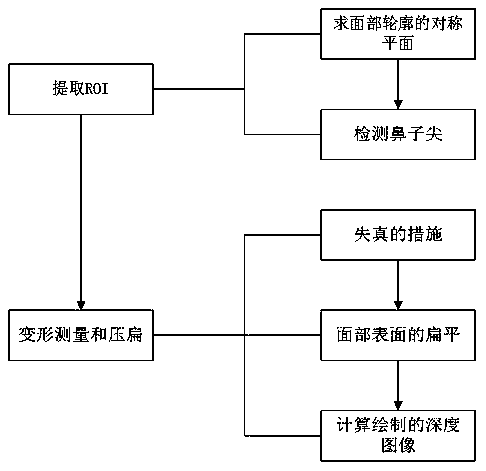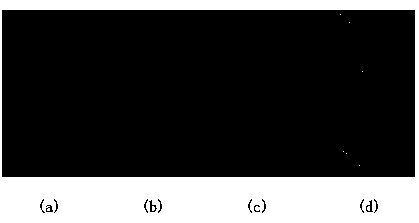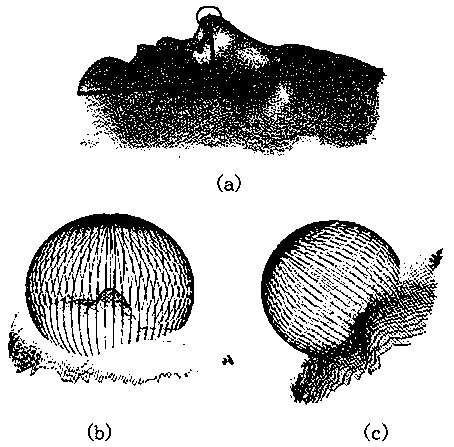Three-dimensional face recognition method based on plane parameterization
A technology of 3D face and recognition method, which is applied in the field of 3D face recognition, can solve the problems of high computing cost of 3D data, difficulty of 3D face model, etc., and achieve an adaptable effect
- Summary
- Abstract
- Description
- Claims
- Application Information
AI Technical Summary
Problems solved by technology
Method used
Image
Examples
Embodiment Construction
[0062] Below in conjunction with accompanying drawing and embodiment the present invention will be further described:
[0063] Such as figure 1 As shown, a kind of three-dimensional face recognition method based on plane parameterization provided by the present invention, the main steps of the recognition method are as follows:
[0064] S1 extract ROI
[0065] S1.1 Find the symmetry plane of the facial contour
[0066] S1.1.1 First propose an efficient method to find the symmetry plane of the face surface, apply and improve it from the face model to detect the central contour curve. The specific steps are as follows:
[0067] 1) Given a point set S of face range data, we can obtain its mirror image S′ that obeys an initial approximate symmetric plane M. After S is registered as S′, S′ is translated into S″, so S and S″ form a new set of points
[0068]
[0069] Wherein S is self-symmetric, and the symmetry plane A passes through the bisector of each pair of correspondi...
PUM
 Login to View More
Login to View More Abstract
Description
Claims
Application Information
 Login to View More
Login to View More - R&D
- Intellectual Property
- Life Sciences
- Materials
- Tech Scout
- Unparalleled Data Quality
- Higher Quality Content
- 60% Fewer Hallucinations
Browse by: Latest US Patents, China's latest patents, Technical Efficacy Thesaurus, Application Domain, Technology Topic, Popular Technical Reports.
© 2025 PatSnap. All rights reserved.Legal|Privacy policy|Modern Slavery Act Transparency Statement|Sitemap|About US| Contact US: help@patsnap.com



